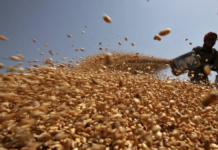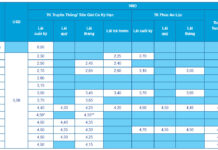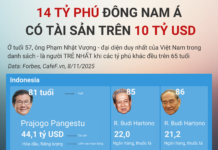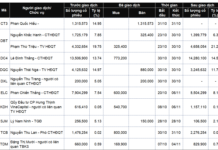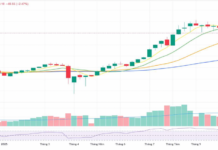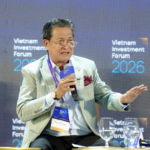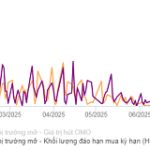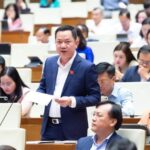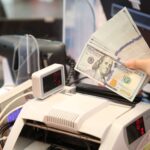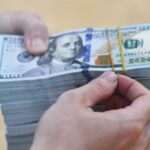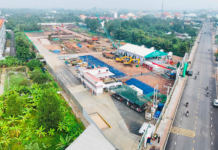
Vietnam is projected to achieve a growth rate of approximately 7.7% in 2025—an encouraging outcome amidst global economic uncertainties.
Breakthrough Growth Amid Challenges, Exchange Rates Under Pressure
On November 10, UOB Bank (Singapore) released its Vietnam Economic Outlook Report for Q4/2025, prepared by its Global Market and Economic Research Division.
Vietnam’s economic growth in 2025 has surpassed expectations, despite risks from U.S. tax policies. With a 7.85% growth rate in the first three quarters, the full-year outlook remains positive. However, due to high comparative figures in Q4/2024, the final quarter is expected to face challenges amid trade and tariff tensions. UOB maintains its Q4/2025 growth forecast at 7.2% but raises its full-year projection to 7.7% from 7.5%. To meet the official target of 8.3–8.5%, Q4/2025 would need to achieve an exceptionally high growth rate of 9.7–10.5%.
Given the robust economic growth in the first nine months and no signs of slowdown, the State Bank of Vietnam (SBV) has limited room to ease monetary policy. Meanwhile, inflationary pressures persist, with September inflation at 3.38% year-on-year, slightly up from 3.24% in August. Year-to-date, average inflation stands at 3.3% (overall) and 3.2% (core inflation), with core inflation exceeding 2024 (2.9%) and 2023 (3%) levels.
Although the correlation between the USD/VND exchange rate and the DXY index (U.S. dollar strength) is limited, the VND typically reacts more slowly than other regional currencies when the USD weakens. As the U.S. Federal Reserve is expected to continue cutting interest rates, domestic exchange rates may stabilize from Q1/2026.
Forecasts indicate the USD/VND rate will remain at 26,400 in Q4/2025, gradually declining to 26,300 (Q1/2026), 26,200 (Q2/2026), and 26,100 (Q3/2026).

Mr. Suan Teck Kin, Managing Director of Global Market and Economic Research, UOB Bank (Singapore)
Mr. Suan Teck Kin, Managing Director of Global Market and Economic Research at UOB Bank (Singapore), commented: “The outlook for late 2025 remains positive, driven by strong performance in the first three quarters, particularly in exports. Vietnam is currently one of ASEAN’s fastest-growing economies, with a projected growth rate exceeding 7%, outpacing Indonesia (5%), Malaysia (4.6–5.3%), Singapore (3.52%), and Thailand (2–3%). The manufacturing sector is a key differentiator and primary driver, delivering higher value-added compared to resource-based sectors like agriculture or mining, solidifying Vietnam’s regional position.”
Impact of U.S. Tariffs: Caution on Potential Delayed Effects
A notable factor is the new U.S. tax policy. UOB experts highlight lingering risks, as there are no specific guidelines on defining “transshipment” or industry-specific tax mechanisms. The furniture sector (HS94), accounting for approximately 10% of Vietnam’s total exports to the U.S., will be most affected once the tax measures take full effect.
With exports of goods and services constituting 83% of its GDP, Vietnam is ASEAN’s second most open economy, after Singapore. Consequently, any changes in U.S. trade policies could have significant impacts.
While Vietnam’s economic outlook remains positive, Q4/2025 is expected to face challenges due to high comparative figures from Q4/2024 and new trade barriers. International organizations maintain their Q4 growth forecast at 7.2% but raise their full-year 2025 projection to 7.7% from 7.5%.
To achieve the official target of 8.3–8.5%, Q4/2025 GDP would need to grow by 9.7–10.5%, a highly challenging goal in the current context.
According to the General Statistics Office, Vietnam’s Q3/2025 GDP grew by 8.23% year-on-year, despite the impact of U.S. tariff policies. This marks the highest growth rate since Q3/2022, when the economy rebounded strongly post-COVID-19 with a 14.4% increase.
This follows an 8.19% growth in Q2 (revised from 7.96%), surpassing Bloomberg’s forecast of 7.2% and independent research estimates of 7.6%. For the first nine months of 2025, Vietnam’s GDP grew by 7.85% year-on-year, reinforcing its position as one of the region’s fastest-growing economies.
This achievement is largely driven by exports and manufacturing. In the first nine months, export turnover increased by 16%, with exports to the U.S. rising by 27.7%—notable given the U.S. import tariffs. Industrial production grew by 10.8%, higher than the 9.4% recorded in the same period in 2024.
The manufacturing PMI has remained above 50 for three consecutive months, indicating recovering business confidence. Foreign direct investment (FDI) also accelerated, reaching $18.8 billion, an 8.5% increase year-on-year. If this trend continues, full-year FDI could approach the 2024 record of $25.4 billion.
Purifying the Digital Realm: Combating the Intoxication of Online Power
Delegate Trịnh Xuân An urged a focus on ensuring national security in cyberspace, cleaning up the online environment, and preventing behaviors associated with “internet power intoxication.”




